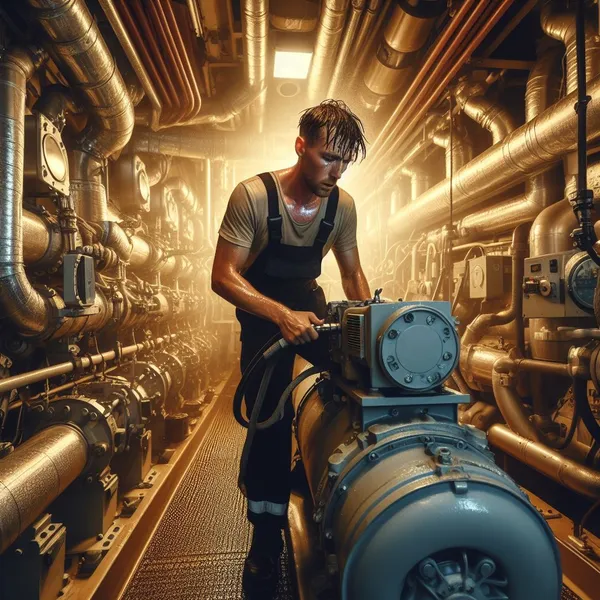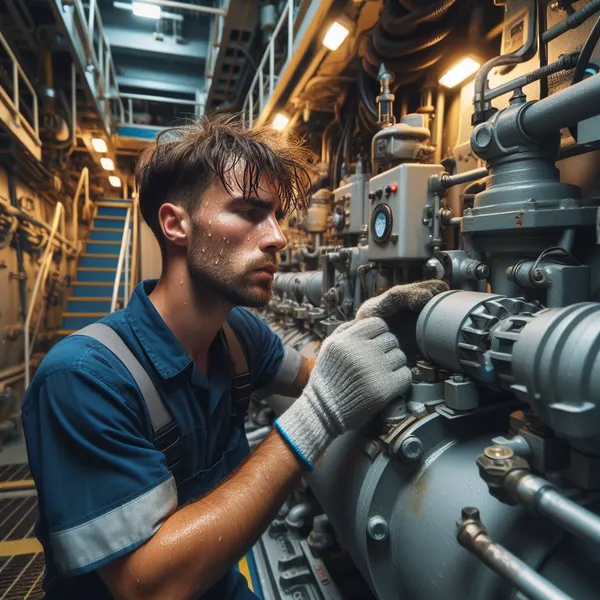
An air compressor is a versatile tool used extensively on ships for various tasks. Whether it’s starting engines, supporting deck operations, or maintaining temperature control, air compressors play a critical role. Let’s explore the different types of air compressors found on ships and their applications.
Types of Air Compressors
Main Air Compressor
The main air compressor is essential for starting the ship’s main engines. It provides high-pressure compressed air, initiating the combustion process in large marine engines.
Emergency Compressor: Ships have at least two main engine compressors—one for normal use and another for emergencies. The emergency compressor can be powered by the emergency generator, ensuring engine restart even during power failures.
Cooling: Electrically driven compressors are usually cooled by water or air.

Deck Air Compressor
The deck air compressor supplies pressurized air for various deck operations. It supports tasks such as operating pneumatic tools, inflating life rafts, and maintaining proper tire pressure for shipboard vehicles.
AC Compressor
The AC compressor is integral to the ship’s air conditioning system. It ensures efficient cooling and temperature control in crew cabins, control rooms, and common areas.
Refrigeration Compressor
Purpose: Refrigeration compressors maintain the required temperature for perishable goods, cold storage, and food preservation.
Service Air Compressors
Apart from the specialized compressors mentioned above, ships also have a service air system.
The service air system caters to general applications that don’t require high pressure. It supplies air for deck operations, pneumatic equipment, and other non-critical functions.
Pneumatic Systems
Air compressors are vital for operating pneumatic tools on board. These tools include drills, wrenches, and other machinery used for maintenance and repair tasks. Additionally, tanker ships utilize pressurized air for devices that measure tank levels.